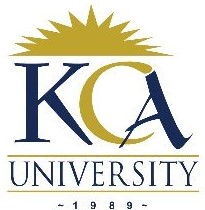 UNIVERSITY EXAMINATIONS: 2010/2011
UNIVERSITY EXAMINATIONS: 2010/2011
SECOND YEAR EXAMINATION FOR THE DEGREE OF BACHELOR OF
SCIENCE IN INFORMATION TECHNOLOGY
BIT 2208 PRINCIPLES OF DATA COMMUNICATIONS
DATE: DECEMBER2011 TIME: 2 HOURS
INSTRUCTIONS: Answer Question One and Any Other Two Questions
Question One (30 Marks)
a) Briefly describe the following terminologies used in data communications
i. Sine Wave (2 Marks)
ii. Baud Rate (2 Marks)
iii. Simplex Data Flow (2 Marks)
iv. Encoder (2 Marks)
v. Multimode (2 Marks)
b) As a network administrator I’m tasked to design networks and make sure that all
interconnections are working. The board has approved the use of satellite transmission in our
network. I have been called by the board to explain:
i. How Satellite transmission occurs.
ii. What is required for this transmission to succeed and
iii. The most important applications for satellites.
What will I tell the board? (6 Marks)
c) Name and explain the Strengths and limitations of Circuit Switched Services (6 Marks)
d) Explain how stop-and-wait flow control works? (4 Marks)
e) Explain the benefits of using X.25 standard in Wide Area Network connections. (4 Marks)
Question Two (20 Marks)
a) Explain the function of the Network Layer in the TCP/IP and OSI reference model (5 Marks)
b) Name and explain two (2) types of Errors that can arise during data transmission. (4 Marks)
c) What is flow control and why is it important in data communication? (5 Marks)
d) Explain the three (3) Automatic Repeat Request (ARQ) techniques used in Error Control
(6 Marks)
Question Three (20 Marks)
a) Explain the following Encoding schemes:
i. Non-Return to Zero-Level (NRZ-L) (2 Marks)
ii. Non-Return to Zero Inverted (NRZI) (2 Marks)
iii. Bipolar –Alternate Mark Inversion (2 Marks)
iv. Pseudoternary (2 Marks)
v. Manchester (2 Marks)
b) Why is data compression useful in communication? (4 Marks)
c) What trade-offs will one consider when designing data compression schemes? (3 Marks)
d) Explain the factors affecting successful interpreting of signals (3 Marks)
Question Four (20 Marks)
a) Describe briefly three (3) ways how Unguided signals can travel from the source to
destination (6 Marks)
b) List and explain three (3) types of Wireless Transmission Waves. (6 Marks)
c) Differentiate between Piconet Bluetooth network and Scatternet Bluetooth network (4 Marks)
d) Explain why Infrared signals cannot be used for long-range communications. (2 Marks)
e) What is the Bluetooth technology implementation standard. (2 Marks)
Question Five (20 Marks)
a) As a network administrator you are tasked with the duty of deciding the Data transmission
techniques that you should use when implementing a network. What will influence your
judgment when deciding on the technique you will use? (7 Marks)
b) Briefly explain the Cabling Systems Evolution that has taken place in the world today.
(6 Marks)
c) What are the Primary Cabling Systems Concerns that the Information technology industry has
to address? (7 Marks)
